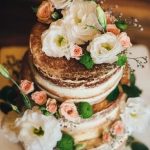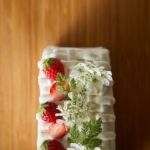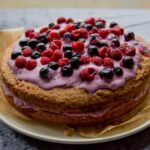Cake decoration is a true art form, and one essential element that can transform a plain cake into a masterpiece is the decorating icing. Whether you are a professional baker or an amateur caking enthusiast, knowing how to make the perfect icing for your designs is crucial. From creating intricate designs to adding vibrant colors and delicious flavors, decorating icing plays a vital role in elevating the visual appeal and taste of your cakes.
Decorating icing not only adds beauty and creativity to your confections but also provides a smooth canvas for any other decorative elements you plan to apply. It acts as the glue that holds together fondant decorations, adds texture to piped designs, and provides stability to multi-tiered cakes. Without a doubt, mastering the art of making decorating icing is an essential skill for anyone passionate about cake decoration.
In this article, we will delve into everything you need to know about creating the perfect decorating icing for your cakes. We will start by exploring the basic ingredients needed for making homemade icing and guide you through choosing the right consistency based on your desired design.
You will also find step-by-step instructions for making classic buttercream icing, along with variations and flavorings that can take your creations to new heights. Additionally, we will break down tips and techniques for achieving vibrant and consistent colors in your icing, as well as explore different piping techniques and designs that can be created using this versatile medium.
So let’s dive in and unlock the secrets of creating delectable decorating icing that not only looks stunning but also tastes absolutely delicious. By arming yourself with these valuable skills, you’ll be able to create beautiful works of edible art that will impress friends, family, and clients alike. Get ready to take your cake decoration skills to new heights with our comprehensive guide on how to make decorating icing for cakes.
The Basics
Decorating icing is a crucial component of cake decoration, adding both flavor and visual appeal to your creations. To make the perfect decorating icing, it is important to understand the essential ingredients required. These ingredients not only determine the taste and texture of the icing but also contribute to its stability and ability to hold various designs.
There are three key ingredients that form the foundation of decorating icing: powdered sugar (also known as confectioners’ sugar or icing sugar), butter, and liquid. Powdered sugar provides sweetness and helps achieve a smooth consistency in the icing. It also dissolves easily, making it perfect for creating a smooth finish on cakes.
Butter adds richness and flavor to the icing, while also contributing to its structure. The liquid ingredient, which can be milk or heavy cream, acts as a binder and helps thin out the consistency of the icing.
| Ingredient | Purpose |
|---|---|
| Powdered Sugar | Provides sweetness and smooth consistency. |
| Butter | Adds richness, flavor, and structure. |
| Liquid (Milk or Heavy Cream) | Binder that thins out the consistency of the icing. |
In addition to these basic ingredients, some recipes may include flavorings such as vanilla extract or almond extract for added taste. Other optional ingredients can be incorporated based on personal preferences or specific recipe requirements. These may include salt to balance flavors, lemon juice for a tangy twist, or additional coloring agents.
It’s important to note that different types of decorating icings require slightly different ingredient proportions to achieve their desired texture. For example, buttercream icing generally uses a higher ratio of butter to powdered sugar for a rich and creamy texture, while royal icing relies heavily on powdered sugar and egg whites to create a glossy and firm consistency.
By understanding the basic ingredients needed for decorating icing, you can experiment with different ratios and variations to create your own unique recipes. The next section will delve into the different types of decorating icing consistencies and their specific uses, helping you further explore the world of cake decoration.
Choosing the Right Consistency
When it comes to cake decorating, choosing the right consistency of icing is crucial. Different types of decorating icing consistencies have specific uses and can greatly impact the final outcome of your cake design. Understanding these consistencies will help you achieve the desired look and ensure that your decoration holds its shape.
There are generally three main types of icing consistencies used in cake decorating: stiff, medium, and thin consistency. Stiff consistency icing is thick and holds its shape well, making it ideal for creating intricate piping designs and detailed decorations such as borders and flowers. It is also commonly used for covering cakes before applying a smoother layer of icing.
Medium consistency icing is slightly softer than stiff consistency but still holds its shape to some extent. This type of icing is often used for medium-level details like writing or creating simple designs such as dots or lines. It has a good balance between stiffness and spreadability, allowing for more versatility in cake decoration.
Thin consistency icing has a smooth and fluid texture, making it easy to spread evenly over the surface of a cake. This type of icing is typically used for covering an entire cake with a base layer, known as crumb coating, or creating an effortlessly smooth finish on top of other layers of icing.
| Type | Consistency | Uses |
|---|---|---|
| Stiff Consistency | Thick | Intricate piping designs, borders, flowers |
| Medium Consistency | Slightly softer than stiff | Writing, simple designs like dots or lines |
| Thin Consistency | Smooth and fluid | Base layer, crumb coating, smooth finish |
It’s important to note that achieving the right consistency for your icing can sometimes be a matter of personal preference or specific design requirements. Adjustments can be made by adding more powdered sugar to thicken the icing or adding small amounts of liquid (such as milk or water) to thin it out.
By understanding the different types of decorating icing consistencies and their specific uses, you’ll have the knowledge and confidence to create beautifully decorated cakes that not only look stunning but also maintain their structural integrity. Experimenting with different consistencies will allow you to explore various cake decoration styles and techniques, making your creations truly unique.
Classic Buttercream Recipe
Buttercream icing is a timeless and versatile option for cake decoration. It is smooth, creamy, and easy to work with, making it perfect for creating intricate designs or simply frosting a cake. Here is a step-by-step guide on how to make a classic buttercream icing that will elevate your cake decorating game.
Ingredients
To make classic buttercream icing, you will need the following ingredients:
- 1 cup unsalted butter.
- 4 cups powdered sugar.
- 2 teaspoons vanilla extract.
- 2 tablespoons milk or heavy cream.
Step 1: Soften the Butter
Start by softening the butter. Take the unsalted butter out of the refrigerator and let it sit at room temperature for about an hour. Softened butter will blend easily with the other ingredients and result in a smoother texture.
Step 2: Beat the Butter and Sugar
Using an electric mixer or stand mixer fitted with the paddle attachment, beat the softened butter on medium speed until creamy. Gradually add in the powdered sugar, one cup at a time, until fully incorporated. Scrape down the sides of the bowl as needed.
Step 3: Add Vanilla Extract and Milk
Once all of the powdered sugar is mixed in, add in the vanilla extract for flavoring. Then, pour in milk or heavy cream to achieve your desired consistency. Start with two tablespoons and gradually add more if needed. Continue beating on medium-high speed until light and fluffy.
Step 4: Decorate Your Cake.
Your classic buttercream icing is now ready to be used for cake decoration. You can apply it using an offset spatula for a smooth finish or use piping bags and tips to create various designs and textures. Get creative and have fun experimenting with different techniques.
By following these simple steps, you can make a classic buttercream icing that will not only taste delicious but also provide the perfect canvas for your cake decoration ideas. Remember, practice makes perfect, so don’t be afraid to try different variations of this recipe and explore new flavors to customize your buttercream icing according to your preferences.
Variations and Flavorings
Adding Extracts and Flavorings
One way to make your decorating icing unique and delicious is by adding different extracts or flavorings. Extracts such as vanilla, almond, lemon, and peppermint can add a subtle yet delightful taste to your icing. Simply add a teaspoon or two of the desired extract to your icing mixture and mix well until fully incorporated. If you prefer a stronger flavor, you can adjust the amount accordingly.
In addition to extracts, there are various other flavor options available that can elevate the taste of your decorating icing. You can experiment with different flavored oils or essences, such as rosewater or orange blossom water, for a more exotic twist.
Another option is to use fruit purees or zest to infuse natural fruit flavors into your icing. For example, blending fresh strawberries or raspberries and straining them to remove any seeds or pulp can provide a vibrant and delicious strawberry or raspberry flavored icing.
Texture Enhancements
In addition to flavors, texture enhancements can also make your decorating icing stand out. One popular option is adding finely grated citrus zest or finely chopped nuts into the icing mixture for added texture and flavor. Not only does this give your cake an interesting contrast in terms of texture, but it also adds an extra layer of complexity to the overall taste.
If you’re looking for something more visually appealing, you can try incorporating colored sprinkles or edible glitter into your decorating icing. These additions not only enhance the appearance of your cake but also provide a fun surprise when biting into it.
Specialty Additions
To make your decorating icing truly unique, you can experiment with specialty additions such as crushed cookies or candies. For example, crushed Oreo cookies mixed into buttercream create a cookies and cream flavored icing that is both delicious and visually striking when used as a decoration. Similarly, mixing in crushed peppermint candies or candy canes can result in a refreshing and festive flavored icing, perfect for holiday-themed cakes.
Remember to always taste your icing as you add flavorings or additions, adjusting the amounts according to your preferences. With some creativity and experimentation, you can create a wide range of unique and delicious flavors that will take your cake decorating to the next level.
Coloring Your Icing
Coloring your icing is an important step in cake decoration as it adds a visually appealing element to your finished product. Whether you want pastel shades or vibrant colors, achieving consistent and vibrant icing colors can be easily done with the right techniques and tips.
- Start with White Icing: To achieve the most accurate and vibrant colors, always start with white icing. This serves as a blank canvas for your desired color. Using pre-colored icing may affect the final shade you are trying to achieve.
- Gel Food Coloring: Gel food coloring is highly recommended for coloring icing because it provides more intense and vibrant colors compared to liquid food coloring which might water down the consistency of your icing. Add small amounts of gel food coloring at a time until you achieve the desired shade.
- Color Wheel: Familiarize yourself with the color wheel to create custom shades and combinations. Mixing primary colors (red, yellow, blue) allows you to create secondary colors (green, purple, orange), while adding black or white can darken or lighten your shades respectively.
- Gradual Coloring: Achieving consistent coloring requires patience. It’s always better to start with less color and gradually add more until reaching the desired hue. This way, you have better control over the intensity of your color and can avoid adding too much and ending up with an overly dark shade.
- Use Toothpicks: When using gel food coloring directly from its container, dipping toothpicks into the gel then transferring them into the icing provides better control over how much color you’re adding. You can also use separate toothpicks for each color to prevent cross-contamination.
- 6.Don’t Forget About Flavor: Some flavorings may affect the consistency of certain brands of gel food coloring when added in large amounts, so be mindful of that when choosing flavors for your colored icings.
By following these tips and techniques on coloring your icing, you will be able to create visually stunning cakes that are sure to impress. Remember that practice makes perfect, so have fun experimenting with different shades and combinations to find the colors that suit your creative vision.
Piping Techniques and Designs
Once you have mastered the art of making decorating icing, it’s time to explore the various piping techniques and designs that can take your cake decoration to the next level. Piping is a versatile skill that allows you to create intricate patterns, beautiful flowers, and even personalized messages on your cakes. In this section, we will delve into some popular piping techniques and designs that you can easily incorporate into your cake decorating repertoire.
One of the most basic but essential piping techniques is the classic swirl. This technique involves using a piping bag fitted with a round tip to create smooth, uniform swirls on the surface of your cake.
The size of the tip will determine the thickness of your swirls, so feel free to experiment with different sizes to achieve different effects. Swirls can be arranged in a circular pattern for an elegant look or placed strategically to form borders or decorative accents.
If you’re feeling more adventurous, consider trying your hand at creating rosettes. Rosettes are small, delicate flowers made by piping concentric circles of icing onto the cake. Start from the center of the flower and work your way outwards with each circle becoming larger than the previous one. You can add color to each layer or use different shades for a multicolored effect. Rosettes are perfect for adding a touch of elegance and sophistication to any cake.
For those looking for a bold statement, shell borders are an excellent choice. Shell borders are created by applying consistent pressure while moving the piping bag in an S-shape motion along the edge of the cake. This results in a beautiful shell-like pattern that adds texture and dimension to your design. Shell borders can be used as simple, standalone decorations or combined with other elements like flowers or leaves for a more elaborate look.
These are just a few examples of piping techniques and designs that can be created using decorating icing. As you experiment and gain confidence, feel free to explore other techniques such as drop flowers, ruffles, or lattice patterns. The key is to practice and have fun while developing your own unique style. With time and patience, you’ll be able to create stunning cakes that are not only delicious but visually impressive as well.
Troubleshooting and Tips
When it comes to making decorating icing for cakes, there can be some common issues that arise, such as the icing being too thick or too runny. The consistency of your icing is crucial for achieving the desired results in cake decoration. To address these issues, here are some helpful tips and troubleshooting advice to ensure you achieve the perfect decorating icing consistency and texture.
Firstly, if your icing is too thick, it can make it difficult to pipe or spread onto the cake smoothly. To thin out your icing, you can gradually add small amounts of liquid such as milk or water, mixing well after each addition until you reach the desired consistency. Be sure to add the liquid slowly so that you don’t end up with runny icing.
On the other hand, if your icing is too thin and runny, it won’t hold its shape when piped or spread onto the cake. To thicken your icing, you can gradually add powdered sugar or confectioners’ sugar until you achieve a thicker consistency. Again, it’s important to add small amounts at a time and mix well after each addition until you reach the desired thickness.
Another common issue is air bubbles in your icing, which can create an uneven surface on your decorated cake. To avoid this problem, make sure to sift your powdered sugar before adding it to the recipe. Sifting helps break up any lumps in the sugar and prevents air pockets from forming in your icing.
Additionally, temperature plays an important role in achieving the perfect consistency for your decorating icing. If your kitchen is warm, your buttercream may become too soft and difficult to work with. To remedy this issue, place your mixing bowl of buttercream in the refrigerator for about 15 minutes to cool it down slightly before using it for piping or spreading onto cakes.
By being aware of these common issues and following these helpful tips, you can troubleshoot any problems with your decorating icing and achieve the perfect consistency and texture for your cake decoration. These troubleshooting techniques will help ensure that your decorating icing is not only visually appealing but also easy to work with, allowing you to create beautifully decorated cakes that will impress your friends and family.
Alternative Icing Options
When it comes to cake decoration, there are so many options and techniques available. While classic buttercream is a popular choice, it’s always fun to explore alternative icing options that can enhance the taste and design of your cakes. In this section, we will discuss two other types of icing – royal icing and cream cheese frosting – that can be used for different cake decoration styles.
- Royal Icing: Royal icing is a versatile and durable icing that hardens when dry, making it perfect for intricate designs and decorations. It is commonly used for decorating cookies, gingerbread houses, and wedding cakes. Royal icing consists of just three ingredients: egg whites or meringue powder, powdered sugar, and water. The egg whites or meringue powder provide stability and help the icing set firmly.
- Cream Cheese Frosting: Cream cheese frosting adds a rich and tangy flavor to cakes and works well with a variety of flavors like red velvet or carrot cake. This type of frosting is soft and creamy, making it great for spreading or piping onto cakes. It consists of just a few simple ingredients: cream cheese, butter, powdered sugar, vanilla extract (optional), and a pinch of salt.
To make royal icing, start by beating the egg whites or meringue powder until frothy. Gradually add sifted powdered sugar and continue beating until the mixture forms stiff peaks. Adjust the consistency by adding water in small increments until desired thickness is achieved. Royal icing can be tinted with food coloring to create vibrant designs or left white for an elegant look.
To make cream cheese frosting, start by beating softened butter until creamy. Add softened cream cheese and continue beating until smooth. Gradually add powdered sugar in small batches while mixing on low speed. Finally, add vanilla extract and a pinch of salt for flavor. Cream cheese frosting can be tinted with gel food coloring for added visual appeal.
By exploring alternative icing options like royal icing and cream cheese frosting, you can create different cake decoration styles that suit your taste and preferences. Whether you prefer the crispness of royal icing or the tanginess of cream cheese frosting, these alternatives will surely elevate your cake decorating game. Experiment with different flavors, colors, and techniques to achieve stunning and delicious results.
Conclusion
In conclusion, understanding the importance of decorating icing in cake decoration is crucial for creating beautiful and delicious cakes. By following the steps outlined in this article, you can now confidently make your own decorating icing at home.
The basics of decorating icing include essential ingredients such as butter, powdered sugar, and vanilla extract. These ingredients form the foundation of a classic buttercream recipe, which can be customized with various flavorings and additions to make it unique and delicious.
Choosing the right consistency for your decorating icing is important as it determines how well it will hold its shape and adhere to the cake. Whether you prefer a thin consistency for spreading or a thicker one for piping intricate designs, understanding the different types of consistencies and their specific uses will help you achieve professional-looking results.
Additionally, coloring your icing can add another layer of creativity to your cake decoration. By following the tips and techniques discussed in this article, you can achieve vibrant and consistent colors that enhance the visual appeal of your cake.
Lastly, exploring alternative icing options such as royal icing or cream cheese frosting opens up even more possibilities for different cake decoration styles. Experimenting with these alternatives can lead to unique flavors and textures that will elevate your cake decoration skills.
Frequently Asked Questions
What kind of icing is best for decorating cakes?
When it comes to decorating cakes, the best kind of icing to use would be buttercream icing. Buttercream is a versatile and easy-to-work-with frosting that can be used for both simple and intricate designs. It holds its shape well, making it ideal for creating decorative piping, borders, flowers, and other intricate details.
Buttercream icing also has a smooth and creamy texture, which makes it easy to spread onto the cake surface for an even finish. Additionally, buttercream icing can be easily flavored and colored to suit various cake flavors and themes, allowing for endless creativity in cake decoration.
Which frosting is best for beginners?
For beginners in cake decorating, a good frosting option would be whipped cream frosting. Whipped cream frosting is relatively simple to make and work with, as it only requires a few basic ingredients like heavy cream, sugar, and flavorings. Its light and fluffy texture makes it forgiving for beginners who may not yet have mastered the skills of smoothing or piping frosting.
Whipped cream frosting is also great for those who prefer a less sweet option compared to buttercream or other frostings. However, it’s important to note that whipped cream frosting does require refrigeration as it can melt at higher temperatures.
Is decorating icing the same as frosting?
While they are often used interchangeably by many people, decorating icing and frosting are not exactly the same thing. Decorating icing usually refers to a stiffer consistency of icing that is specifically designed for creating decorative elements on cakes or cookies. This type of icing holds its shape well when piped or molded into desired shapes such as flowers or intricate designs.
Frosting generally refers to softer icings that are used to cover an entire cake’s surface or to fill layers between cake tiers. Frosting tends to have a smoother and more spreadable consistency than decorating icings. However, there can be some overlap between the two terms depending on regional differences or personal preferences within the baking community.

Welcome to my blog about home and family. This blog is a place where I will share my thoughts, ideas, and experiences related to these important topics. I am a stay-at-home mom with two young children. I hope you enjoy reading it! and may find some helpful tips and ideas that will make your home and family life even better!





